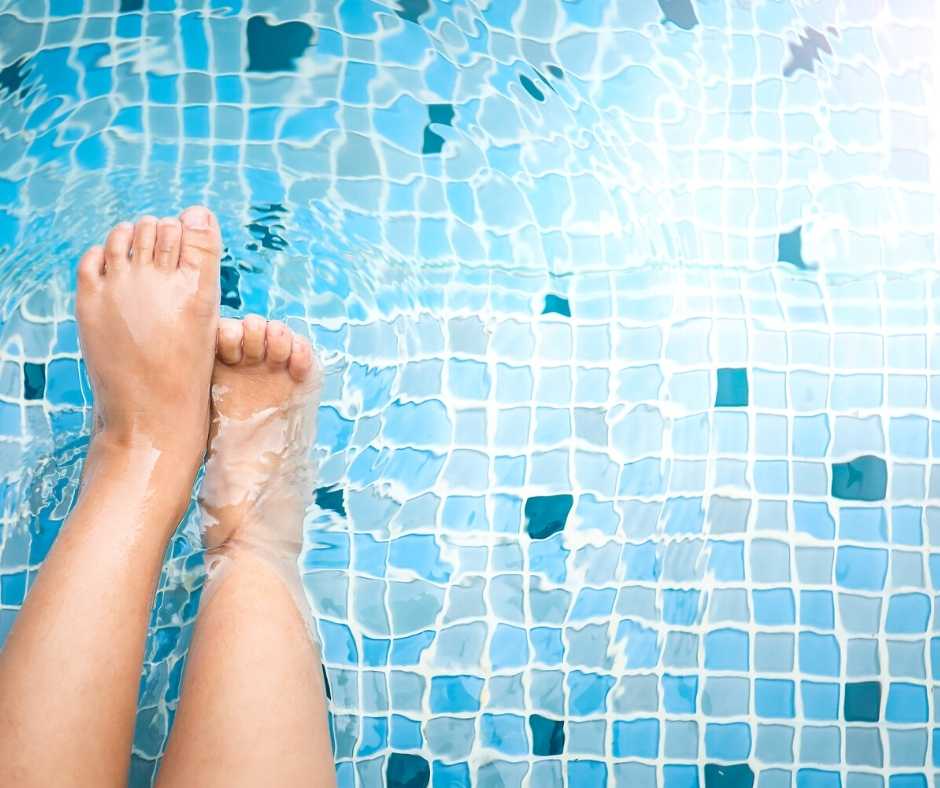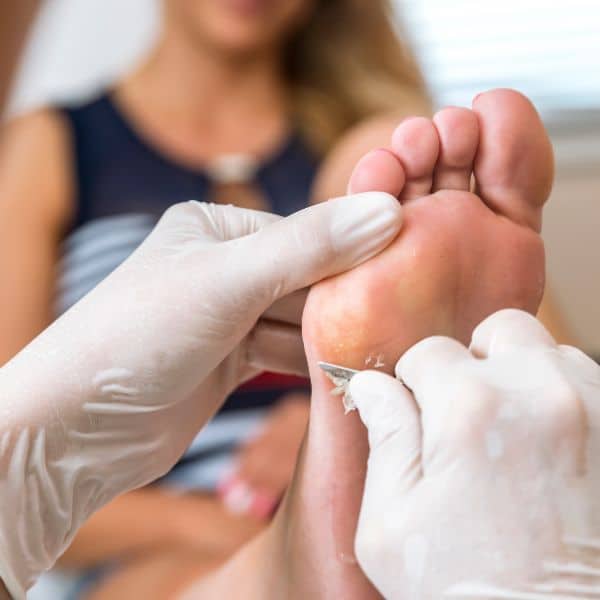Our feet are trusted to carry round our body weight and keep us moving every single day, therefore it’s incredibly important for us to look after them, especially after a long day. Of course, there is only so much we can do to help you to protect your feet, the rest is up to you. One issue we tend to see a lot is an infected ingrown toenail, which is why we’re discussing the best advice to help you recover with speed and get you back on your feet in no time.
What Is An Ingrown Toenail?
An ingrown toenail occurs when the corners or edges of the nail grows into the skin in the toe rather than growing outwards, causing pain and discomfort. It’s most likely to happen on your big toe, however it can happen on any of your toes. It’s a fairly common issue to experience and it can be treated relatively quickly and easily.
Ingrown toenails, medically known as onychocryptosis, can be particularly troublesome and painful. They typically develop when the pressure from the growth of the nail edge into the skin causes inflammation. This condition is not only painful but can also lead to infection if not treated properly.
Several factors contribute to the development of ingrown toenails:
- Improper Nail Trimming: Cutting nails too short or not straight across can encourage the nail to grow into the surrounding skin.
- Tight Footwear: Shoes and socks that do not fit properly can also push the nail into the surrounding tissue.
- Toe Injury: Any injury near the nail, such as stubbing your toe, can make you more susceptible to ingrown toenails.
- Genetics: Some people are born with nail shapes that are more prone to becoming ingrown.
- Poor Posture and Foot Structure: Abnormal gait and foot structure can also lead to abnormal nail growth.
Symptoms to Watch For
The typical symptoms of an ingrown toenail include:
- Swelling and Redness: The toe around the nail becomes red and swollen.
- Pain: Pain and tenderness along the margins of the toenail are common.
- Infection: In some cases, you might notice pus or drainage, indicating an infection.
Why Big Toes Are Commonly Affected
The big toe is particularly susceptible to ingrown toenails due to its significant role in bearing the body’s weight and maintaining balance. This toe experiences substantial pressure, which, combined with any of the aforementioned causes, increases the likelihood of nail edges growing into the surrounding skin.
By understanding the causes and symptoms of ingrown toenails, you can better prevent and manage this common foot problem. Continuing to follow safe foot care practices and choosing the right footwear are key steps in preventing ingrown toenails and keeping your feet healthy.
How To Prevent An Ingrown Toenail…
Even though anybody can develop an ingrown toenail at any point in their lifetime, there are certain things that you can do to prevent one from developing. For example, keeping nails well trimmed and wearing sensible fitted shoes are the best options for maintaining healthy feet and nails.
How To Treat An Infected Ingrown Toenail At Home…
Before visiting a GP or podiatrist, you should attempt to treat your ingrown toenail at home, as long as you are not suffering with bleeding, pus and a fever. You can do this by soaking your feet in warm, salty water for 15 minutes, several times per day. Ensure to fully dry your feet afterwards and keep them clean and dry in between soaks.
If you can, aim to wear sandals or other comfortable, breathable shoes to allow the nail to breathe properly rather than becoming trapped. It will heal more quickly and prevent infection from becoming worse.
If the pain and swelling continues to worsen, rather than getting better and beginning to heal, you should visit your GP or a podiatrist. They can prescribe antibiotics to help fight off the infection.
Recovery and Aftercare for Ingrown Toenails
Successfully recovering from an ingrown toenail and preventing future issues requires careful attention to aftercare. Following the right steps not only speeds up your recovery but also minimises the risk of complications.
Immediate Aftercare Following Treatment
Whether you’ve undergone a simple home treatment or professional medical intervention like nail surgery, the immediate steps you take can significantly affect the healing process.
- Keep the Area Clean and Dry: After any nail procedure, it’s crucial to keep your toe clean. Wash the area daily with warm water and mild soap. Avoid soaking the toe initially unless advised by your healthcare provider, as excess moisture can impede healing.
- Dress the Wound Properly: If your doctor has performed a procedure, you’ll likely leave with a bandage. Follow their instructions on how to care for this dressing, typically involving keeping it dry and changing it regularly to prevent infection.
- Manage Pain and Swelling: Elevate your foot to reduce swelling. Over-the-counter pain relievers like ibuprofen can help manage pain and reduce inflammation. Always check with your healthcare provider before starting any medication.
Long-Term Care to Prevent Recurrence
Preventing the recurrence of ingrown toenails is as crucial as initial recovery. Here are some long-term strategies:
- Proper Nail Cutting Technique: Trim your toenails straight across and not too short. This prevents the corners of the nails from growing into the skin. A nail file can be used to gently smooth the edges.
- Appropriate Footwear: Wear shoes with a wide toe box and avoid high heels or tight shoes that put pressure on the toes. This gives your nails enough room to grow outward instead of into the skin.
- Foot Hygiene: Maintain good foot hygiene by washing your feet regularly and thoroughly drying them, especially between the toes. Use antifungal sprays or powders if you’re prone to fungal infections.
- Regular Podiatry Visits: If you frequently suffer from ingrown toenails, regular check-ups with a podiatrist can help. They can provide professional nail care and spot potential problems before they become severe.
Monitoring for Signs of Complications
Keep an eye out for signs of infection during the healing process, such as increased redness, swelling, pain, or pus. If you notice these symptoms, contact your healthcare provider promptly. They may prescribe antibiotics to treat the infection or suggest further treatment options.
By implementing these recovery and aftercare strategies, you can ensure a quick and effective healing process for your ingrown toenail and reduce the likelihood of future occurrences. Regular follow-up with your healthcare provider is essential to monitor your progress and maintain optimal foot health.
Further Help For An Infected Ingrown Toe Nail…
If you have an infected ingrown toe nail which isn’t getting better, or a recurring ingrown nail which doesn’t seem to want to heal, you’ve come to the right place. Here at the Northwich Foot Clinic, we offer a range of podiatry services including partial nail and full nail removal. If you’re suffering with your infected ingrown toenail and home remedies aren’t working, you can book an appointment with us online here. We will then be able to take a look and decide which route of treatment is best to take according to your individual circumstances.





